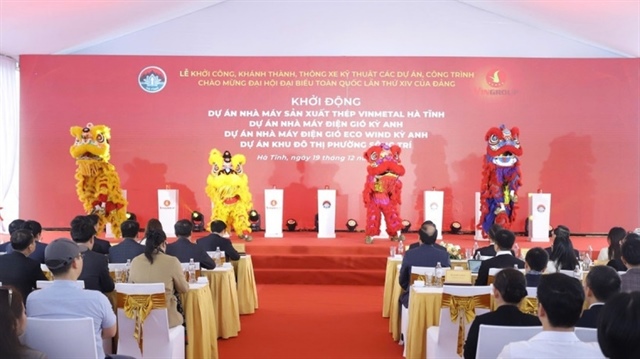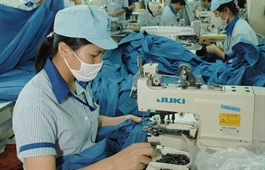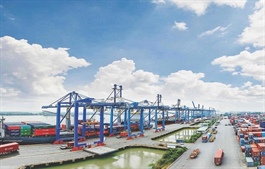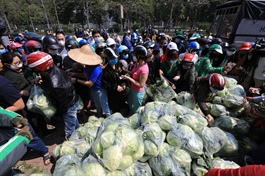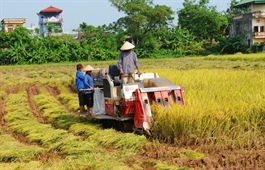Enterprises change to deal with the prolonged pandemic
Enterprises change to deal with the prolonged pandemic
As the COVID-19 pandemic continues to disrupt global activities, some industries and businesses have applied technology and new working practice to limit its influence.

Nguyen Duc Thuan, chairman of the Viet Nam Leather, Footwear and Handbag Association (Lefaso), said his company had been forced to adapt to new methods.
“As the Government has accelerated the industrial revolution 4.0, the leather, shoe and handbag industry has applied flexible methods to update its production, sales and export in the new situation.
“We have built a new online 3D design and trade interface for samples, which was made by Vietnamese designers, researchers and developers.
“It has not only helped the industry to get new orders but also created an opportunity to prove to major brands in the world that Viet Nam has the capacity to comprehensively design and develop global supply chains."
Last year, he said, the fashion industry completed 90 per cent of their plan thanks to Government's efforts controlling the pandemic, the many free trade agreements (FTAs) that were signed such as EVFTA, RCEP and UKVFTA and also the efforts of each business in changing themselves.
According to Lefaso, the total export turnover of the leather, shoe and handbag industry in 2020 reached about US$19.5 billion, down 11 per cent from 2019 and the export turnover returned to the levels of 2018.
The US and EU markets, which account for 70 per cent of the total export volume of the industry were the markets most affected by the pandemic.
The leader of Lefaso said in the new context, buyers changed ordering method so the suppliers like Viet Nam were forced to change their capacity to meet production and delivery needs. Local producers suffered from more severe conditions such as 30 per cent shorter delivery time, lower on-board delivery (FOB) prices and better supply chain transparency.
Adapting to the news changes, at this time of the year, Thuan said the industry was seeing good signs with many businesses receiving orders for this year and the industry aimed to achieve an export turnover of more than $20 billion to offset the losses caused by the pandemic.
As for the textile and garment industry, Le Tien Truong, chairman of Viet Nam National Textile and Garment Group (Vinatex), said: “The supply chain and operation modes are rearranged in the post-COVID period of 2021-2023.
“It is expected that until the middle or the end of 2023, the textile market will return to the threshold of 2019.”
Truong said in the period “the characteristics of the market and the competition are completely different” as the digital transformation and the application of IoT would be the necessary conditions in businesses as online methods increased strongly with the support of remote size testing technology and many applications on smartphones.
Truong said: “The competitive advantage of traditional and large enterprises is in danger of being erased after a period of suspension due to the interrupted chain in the pandemic, competitors will start at the same line at a new starting point.”
According to Truong, Vinatex is determined to digitally transform their entire operating process including production management, inventory and logistics. At the same time, it has also improved production capacity under OEM model and training and retraining workforce in new conditions, especially ensuring financial safety for long-term development.
Nguyen Tuan Linh, director of Mr Linh Adventure Travel, said that tourism revenue last year decreased by 90 per cent compared to 2019.
Linh said many tourism firms had taken the time to rebuild their system and develop a new form of business. Linh said his firm was working with the idea to build an app providing a travel guide for foreign visitors to Viet Nam called Vietnamguide.travel, in order to provide information to foreigners before travelling to Viet Nam.
Linh said the app was currently being built and expected to be available to the market in the second quarter of this year.




